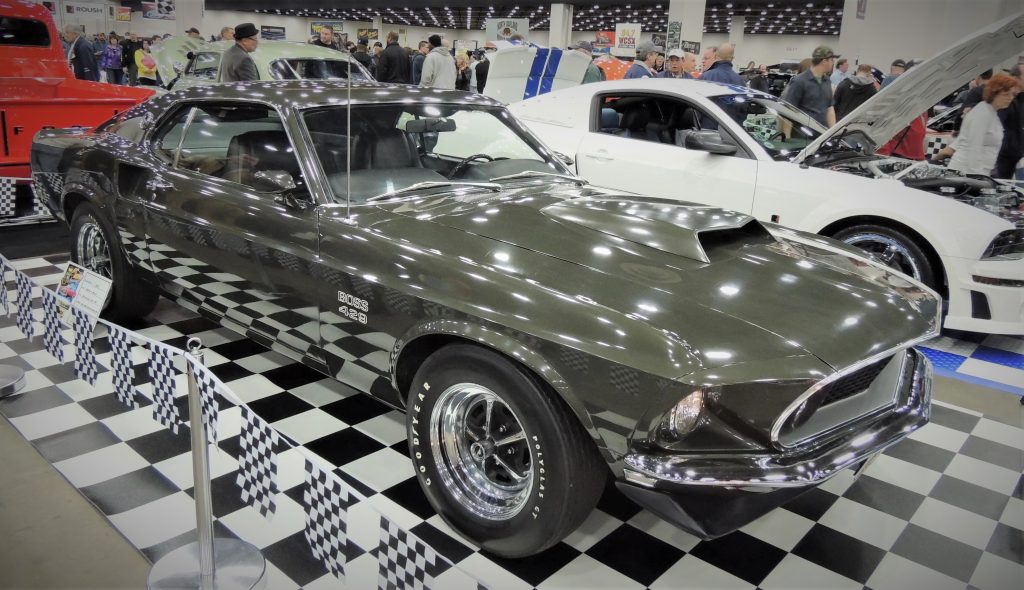Editor’s Note: The decade of the 1960s is considered by many to be the greatest in American automotive history. There’s little mystery why. The 1960s gave birth to the “muscle car wars” and game-changing performance pony cars. Legends like the Pontiac GTO, Ford Mustang, Chevy Camaro, HEMI-powered Mopars, and several others. How does one choose which is best? Controversially, we’re guessing. That’s why you’re taking some of the heat, too. We sync’d up with our friends on Summit Racing’s social media team to put the question out to their Facebook and Instagram audiences: What is the top car of the 1960s? The countdown to #1 continues.

We often refer to the 1960s as the era of the “muscle car wars” (see Editor’s Note above).
But the real battles often took place on the race track where Detroit’s heavy-hitters tried to outdo each other in terms of power, speed, and win lights. That’s where the story begins for your reader-voted fifth-best car of the 1960s: the 1969 Ford Mustang Boss 429. Ford was looking to develop a hemispherical engine that could compete with the Chrysler’s 426 HEMI engine, which was highly successful in NASCAR’s then-Grand National Division. The end result turned out to be one of the rarest and most-valued muscle cars of all time—the legendary “Ford Boss 9.”
The 1969 Ford Mustang Boss 429 was powered by Ford’s new 429-cubic-inch engine, which featured semi-hemispherical combustion chambers. To meet NASCAR’s homologation rules, which required a minimum production run of 500 cars, Ford shoehorned the “Semi-Hemi” engine into just 859 Boss 429s for 1969.
Although it was a small production run, it was certainly no small task.
To get the massive engine—an engine that would’ve been better suited for a Torino—to fit into the smaller Mustang, Ford contracted out to Kar Kraft Engineering of Dearborn, MI. The team at Kar Kraft had modified Ford’s existing 428 Cobra Jet and Super Cobra Jet Mach 1 Mustangs to accommodate the big block. These modifications included widening the shock towers, extending out the inner fenders, chopping and displacing the motor mounts, and relocating the battery to the trunk. They also lowered the suspension, which ultimately made the Boss 429 a better-handling muscle car than many of its counterparts.
Truth is, the Boss 429 was essentially hand-built.
The 1969 “Boss 9” was rated conservatively at 375 horsepower and 450 ft.-lbs. of torque, but actual output was thought to be well over 500 horsepower. Each of the 859 Boss 429s was given special NASCAR identification, which was placed on the driver’s side door.
Today, the 1969 Mustang Boss 429 is one of the most highly valued muscle cars from the 1960s.
Was it truly the Boss in the 1960s?
You say four other cars topped the Boss 429 for 1960s American performance supremacy.
Stay tuned to see what they are.

Comments